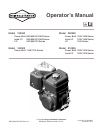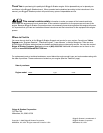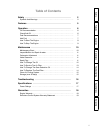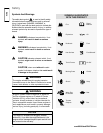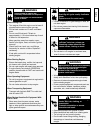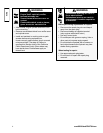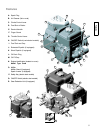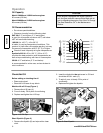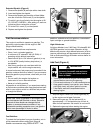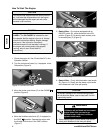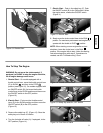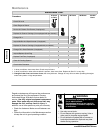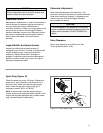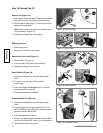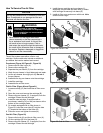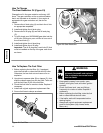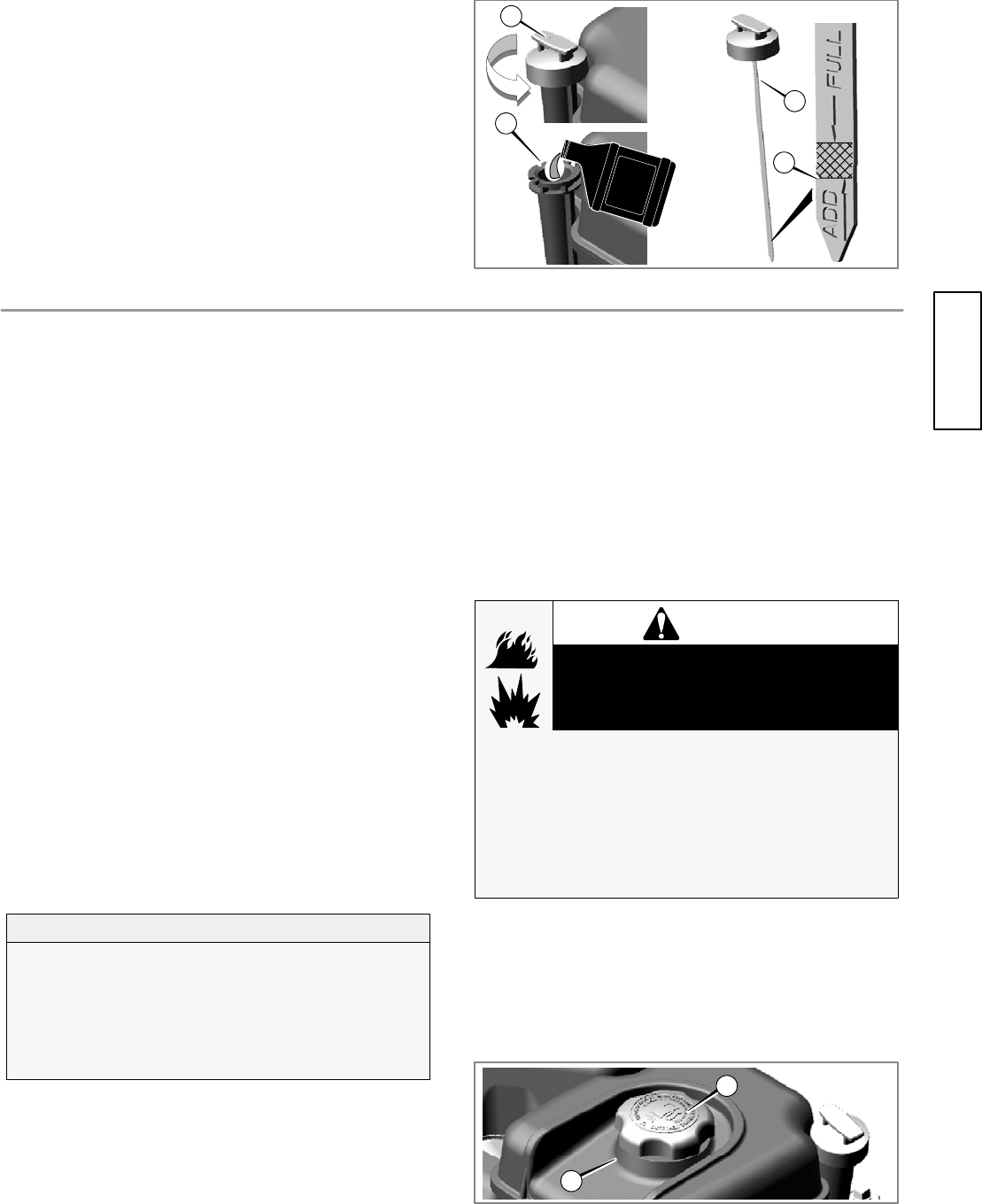
Operation
7
Extended Dipstick (Figure 3)
1. Remove the dipstick (B) and wipe with a c lean cloth.
2. Insert and tighten the dipstick.
3. Remove the dipstick and check the oil level. Make
suretheoilisattheFULLmark(C)onthedipstick.
4. To add oil, pour the oil slowly into the engine oil fill
(D). DO NOT OVERFILL. After adding oil, wait one
minute and then recheck the oil level.
5. Fill to the FULL mark (C) on the dipstick.
6. Replace and tighten the dipstick.
Figure 3: Extended Dipstick
C
B
B
D
Fuel Recommendations
This engine is certified to operate on gasoline. The
emissions control system for this engine is EM
(Engine Modifications).
Gasoline must meet these requirements:
• Clean, fresh, unleaded gasoline.
• A minimum of 87 octane/87 AKI (91 RON). If
operating at high altitude, see below.
• Gasoline with up to 10% ethanol (gasohol) or up
to 15% MTBE (methyl tertiary butyl ether), is
acceptable.
• Use of any gasoline not consistent with the
requirements will void the engine warranty.
In some local areas, fuel pumps may be marked if the
gasoline contains alcohols or ethers. If you are unsure
about the gasoline you purchase, check with your fuel
provider.
• Do not modify the engine fuel system or
carburetor to run on alternative fuels.
• Never mix oil with gasoline.
All gasoline is not the same. If you experience starting
or performance problems after new gasoline has been
used in your engine, switch to a different fuel provider
or change fuel brands.
Some fuels, called oxygenated or reformulated fuels,
are fuels blended with alcohols or e thers. Excessive
amounts o f these blends can damage the fuel
system or cause performance p roblems. If any
undesirable operating symptoms occur , use gasoline
with a lower percentage of alcohol or ether.
CAUTION
Fuel Stabilizer
To protect the fuel system from gum formation, mix in
a fuel preservative when adding fuel. Briggs &
Stratton recommends using FRESH STARTt fuel
stabilizer, available as a liquid additive, concentrated
liquid cartridge or granular additive.
High Altitude use
At higher altitudes (over 5,000 feet), 85 octane/85 AKI
(89 RON) gasoline can be used. Operation at high
altitude may require a high-altitude carburetor jet kit to
improve performance and decrease fuel consumption.
See an Authorized Briggs & Stratton service dealer for
more information.
Add Fuel (Figure 4)
Gasoline and its vapors are
extremely flammable and explosive.
Fire or explosion can cause severe
burns or death.
• Turn engine off and let engine cool at least 2
minutes before removing the gas cap.
• Fill fuel tank outdoors or in well-ventilated area.
• Keep gasoline away from sparks, open flames,
pilot lights, heat, and other ignition sources.
• If fuel spills, wait until it evaporates before
starting engine.
WARNING
1. Stop the engine. Before you remove gas cap (A),
let the engine cool at least 2 minutes.
2. Remove the gas cap. Fill the fuel tank (B) to
approximately 1-1/2 inches below top of neck to
allow for fuel expansion. Be careful, do not overfill.
3. Replace the gas cap before starting the engine.
Figure 4: Gas Cap
A
B



